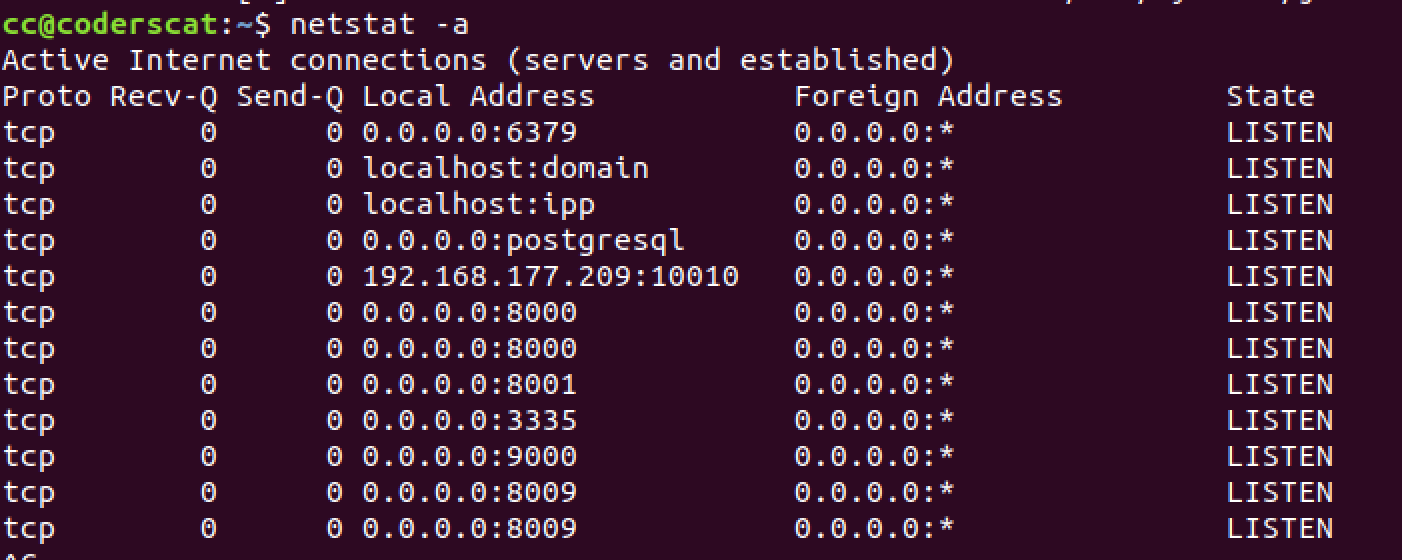
netstat is a command-line networking tool, which can be used to show the statistics of networking connections. It’s a must tool for finding the performance problems in Unix/Linux networking.
In this post, I will list the typical usages and most used options of netstat.
List all the sockets
Use -a option to list all the sockets, including those in listen state and also not in listen state.
Use -l option to list the sockets in listen status.
|

List only TCP sockets
Use -t option to list only the TCP sockets.
|

Find the related process
Use -p option to show the program name and pid with sockets.
|

Suppose we want to find which process is binding a specific socket.
|

Use pipeline for statistics of networking
With the pipeline, we could combine netstat with other command utilities, like awk, sort.
Let’s find all the counts for different networking status.

Note:
awk '{print $6}' : use just the 6th column from output.
tail -n + 2 : remove the first line from output (since it’s header)
Join my Email List for more insights, It's Free!😋
